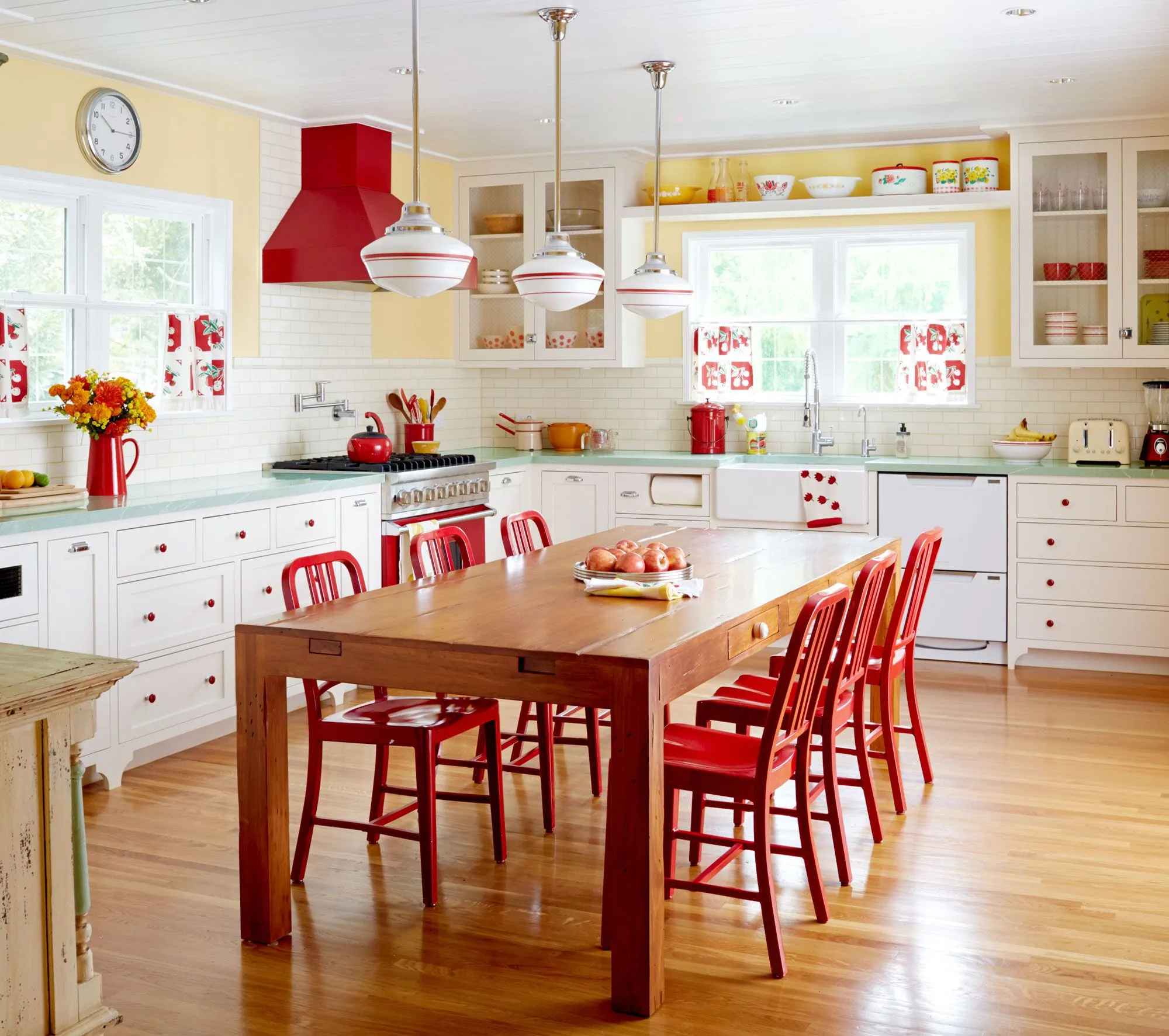The Allure of 1950s Kitchens
The 1950s kitchen represents a fascinating intersection of post-war optimism, technological advancements, and a renewed focus on domesticity. After years of rationing and hardship, the kitchen became a symbol of the American Dream, a place of comfort, and a showcase of modern living. Designing a kitchen decor 1950s style is more than just a design choice it’s a journey back in time. The era was defined by its cheerful aesthetic, innovative appliances, and the central role the kitchen played in family life. This article explores the secrets of recreating this iconic look in your own home, from the pastel colors to the retro appliances, and everything in between. Understanding the historical context is the first step in capturing the authentic charm of the era.
Color Palette of the 1950s
The color palette of the 1950s was a vibrant departure from the muted tones of the preceding decades. It was a time of optimism and bold expression, and the colors reflected this. Pastels were incredibly popular, lending a soft, inviting feel to the kitchen, while brighter accent colors added pops of energy and excitement. Think about the feelings you wish to evoke when deciding what colors to utilize in your kitchen. Should it feel happy, cozy, or perhaps a combination of both? The color palette is key to making the entire design look authentic.
Pastel Perfection Hues
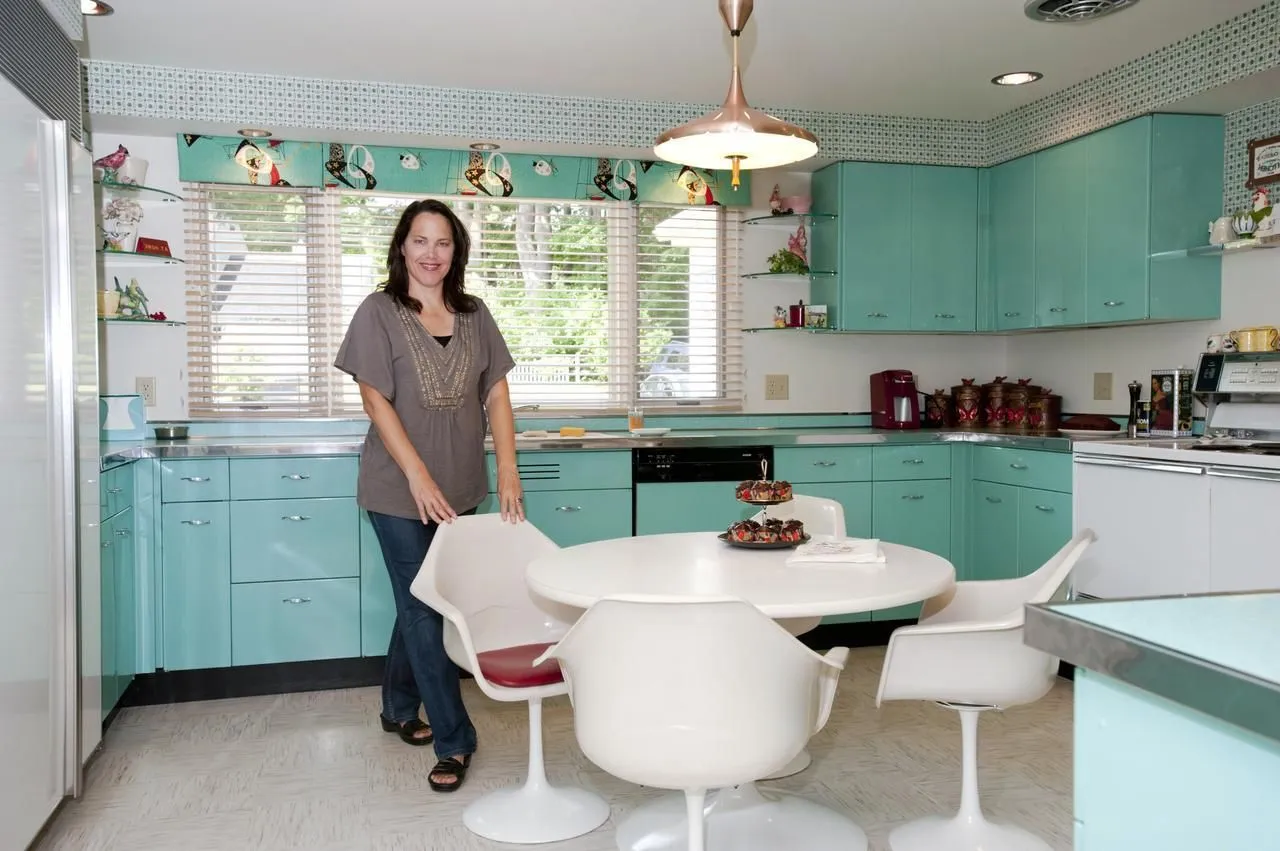
Pastel colors were the cornerstone of 1950s kitchen design. Soft shades of pink, turquoise, yellow, and green were used extensively on walls, appliances, and cabinetry. These colors created a sense of cleanliness, modernity, and cheerfulness. Consider using these pastels as the primary colors for your kitchen, pairing them with white or cream to create a balanced look. These tones not only made the kitchens welcoming but also brightened the spaces, especially important as many kitchens of the era were not blessed with abundant natural light. You can find many examples of 1950s kitchens that have been preserved, allowing you to gather inspiration and information about the design choices that were made.
Bold and Bright Accent Colors
While pastels provided the foundation, bold accent colors added personality and visual interest. Red, black, and chrome were often used for appliances, countertops, and accessories. These colors contrasted beautifully with the softer pastels, creating a dynamic and engaging space. Using a bright red for your mixer or a glossy black for the countertop can instantly add a touch of 1950s flair. These strong colors were used to define key areas or features within the kitchen, making them stand out and giving the room a modern edge for the time. Adding touches of these colors is a perfect opportunity to add personality without overhauling the entire kitchen.
Retro Appliances and Their Impact
Appliances in the 1950s were more than just functional items; they were status symbols and design statements. The era saw the rise of new technologies and innovative designs, transforming the kitchen into a modern, efficient workspace. The size, color, and style of your appliances can make or break the overall 1950s aesthetic. It’s about the appliances themselves and how they fit into the broader design scheme of the space. They are the heartbeat of the entire room. Their unique designs and bold colors are instantly recognizable. If you’re committed to the look, consider integrating some vintage or retro-style appliances. Whether you opt for fully functional vintage pieces or modern appliances with a retro look, they’ll play a huge role in bringing your 1950s kitchen to life.
Iconic Appliance Styles
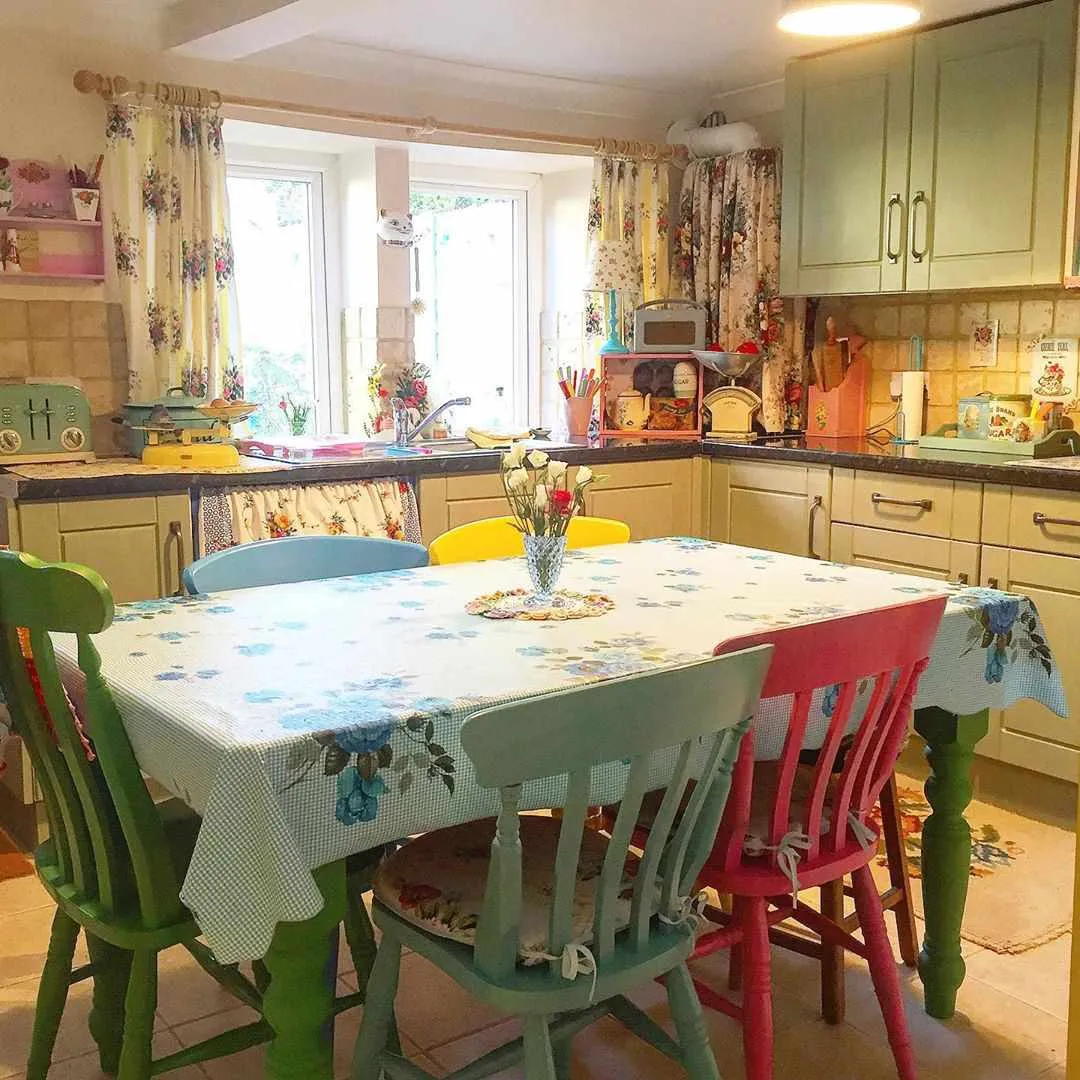
Refrigerators were often large and rounded, with chrome handles and bold colors. Stovetops and ovens featured sleek designs with integrated timers and convenient features. Dishwashers were becoming more common, often with a built-in look. These appliances were not just functional; they were designed to be attractive and to complement the overall kitchen design. The rounded edges and chrome accents were the defining characteristics of 1950s appliances, reflecting the era’s interest in streamlined design. The colors were bold and vibrant, frequently matching the overall color scheme of the kitchen to create a cohesive and stylish look. The appliances not only made the kitchen more efficient but also added a touch of glamour and modernity that was highly sought after at the time.
Where to Find Vintage Appliances
Finding vintage appliances can be a rewarding but potentially challenging endeavor. Start by exploring online marketplaces such as eBay and Etsy. Local antique stores, salvage yards, and estate sales are also great sources. Before purchasing, carefully assess the appliance’s condition and ensure it is in good working order or can be restored. Check for any necessary repairs or restoration work. If you choose to go with vintage appliances, always prioritize safety. If you’re not comfortable with electrical work, hire a qualified electrician. Make sure that the vintage appliance is safe to use in your kitchen. Many modern appliance companies offer retro-style appliances, which are a great alternative if you want the look without the challenges of vintage finds.
Diner-Style Seating and Design
Diner-style seating was a popular feature in many 1950s kitchens, providing a comfortable and stylish spot for family meals and casual gatherings. This typically involved a booth-style setup or a freestanding table with vinyl-covered chairs. Consider incorporating these design elements to capture the classic charm of the era. It’s an excellent way to create a cozy and inviting atmosphere. This seating often incorporated bright colors, chrome accents, and playful patterns, reflecting the cheerful aesthetic of the 1950s. The booth or diner-style table created a central hub for the kitchen, encouraging connection and a sense of community. This design also added a touch of fun and informality to the kitchen, perfect for relaxed meals or social gatherings.
Creating a Cozy Corner
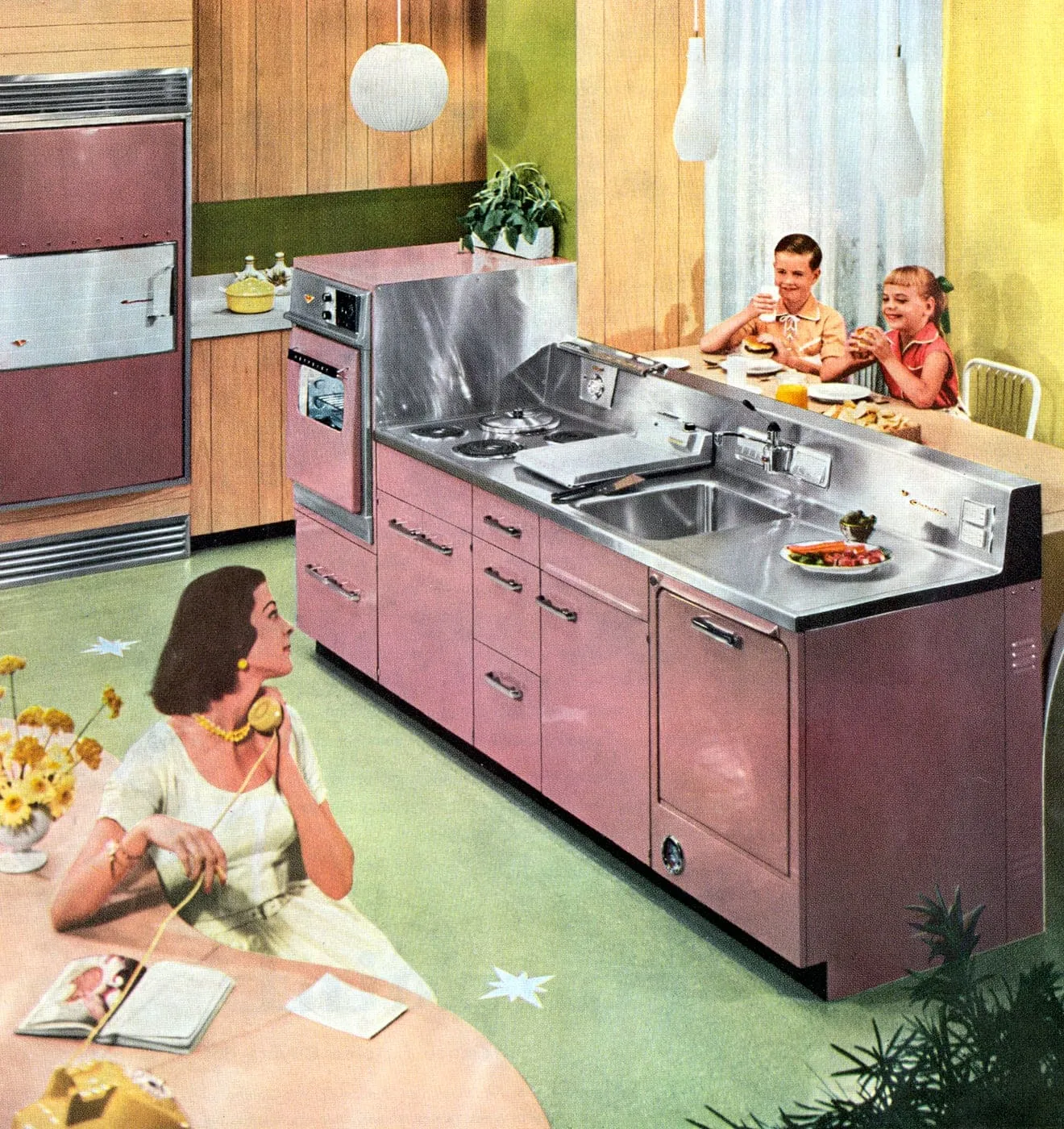
Designate a specific area for your diner-style seating. This could be a corner of the kitchen, a breakfast nook, or even a space near a window. If space is limited, a smaller table with a few chairs will work. Focus on creating a cozy and inviting atmosphere. Use soft lighting, like a pendant lamp or a small table lamp, to create a warm ambiance. Add a few decorative elements, such as a vintage clock, a retro sign, or some colorful cushions, to personalize the space and enhance the retro look.
Choosing the Right Table and Chairs
When selecting a table, opt for a classic diner-style table with a laminate top and chrome edging. The size should be appropriate for the available space and the number of people you want to seat. For chairs, look for vinyl-covered chairs with chrome legs. Choose colors that complement your overall kitchen decor, such as red, turquoise, or yellow. You can also mix and match colors for a more eclectic look. The materials used in the table and chairs were usually durable and easy to clean, reflecting the practicality of 1950s design. The goal is to create a functional, comfortable, and stylish seating area that perfectly captures the essence of the 1950s diner style.
Accessorizing with Vintage Charm
Accessories are the key to bringing the entire design scheme together. Choose vintage dishware, colorful canisters, and retro-style clocks to add authentic flair. Small details can make a big difference, so don’t underestimate the power of accessories. The kitchen decor 1950s era was all about showcasing personality and creating a welcoming atmosphere. The accessories can be incorporated to bring in pops of color and to add a touch of visual interest. Incorporating vintage or reproduction accessories allows you to customize your kitchen and to reflect your individual style. This also allows you to build a unique and personalized space that celebrates the spirit of the 1950s.
Dishware and Decor
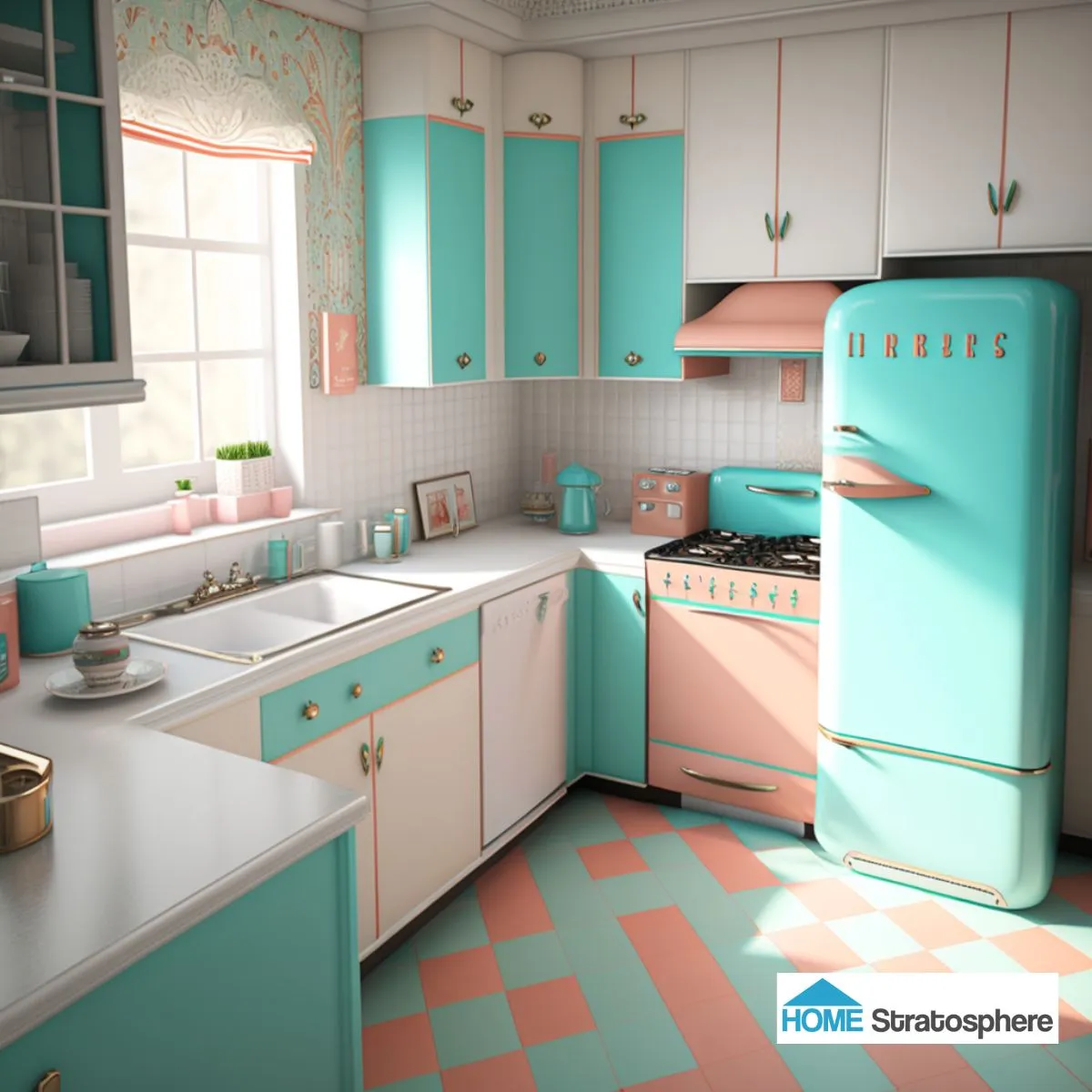
Look for colorful dishware with geometric patterns or floral designs. Consider purchasing sets with matching cups, saucers, and serving bowls. Vintage canisters, salt and pepper shakers, and other countertop accessories are great for adding authentic details. Add a retro-style clock on the wall and vintage cookbooks on the counter for added charm. Look for items with bold colors, geometric shapes, or playful designs to add a touch of visual interest. The dishware and decor choices reflect the era’s love of functionality, beauty, and a sense of fun. The choice of dishware and accessories can transform a simple kitchen into a vibrant and stylish space. The right accents help tell a story and bring your 1950s kitchen to life.
Adding Curtains and Fabrics
Curtains and fabrics play a crucial role in the overall aesthetic of a 1950s kitchen. Choose curtains with playful patterns, such as polka dots, gingham, or floral prints. Look for fabrics in bright, cheerful colors that complement your color scheme. You could add fabric to your kitchen in multiple ways. For example, you can create cushions for your dining chairs, a table runner for your dining table, or even some decorative aprons. Curtains and fabrics bring warmth, texture, and personality to the kitchen. They can also help to soften the space, making it more inviting. These fabrics add a sense of fun and create a feeling of warmth and comfort. They also add a touch of personality to the kitchen, reflecting the homeowner’s style and creativity.
Bringing it All Together
Bringing a 1950s kitchen to life requires a thoughtful blend of colors, appliances, seating, and accessories. Stay true to the era’s design principles, but don’t be afraid to add your personal touch. The kitchen is a space of personality and expression, so feel free to customize the design to meet your needs and reflect your style. Think about the atmosphere you want to create, and make sure your choices reflect this. It is important to stay true to the spirit of the 1950s, and to create a space that is both functional and aesthetically pleasing. The ultimate goal is to create a space that is inviting, comfortable, and a true reflection of the iconic era.
